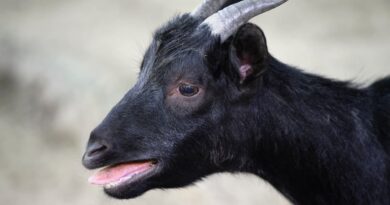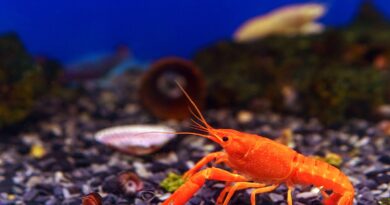Can a Snake Eat a Human Hand? Facts You Need to Know
Snakes have long captured human fascination with their mysterious behaviors, unique biology, and predatory prowess. Among the many myths and truths surrounding these creatures is a peculiar question: can a snake eat a human hand? To answer this intriguing question, we need to dive into the anatomy of snakes, their dietary preferences, and what happens when they encounter human extremities. This article explores the science and reality behind such scenarios while busting myths and providing interesting insights into the world of snakes.
Understanding Snake Anatomy and Feeding Mechanisms
The Elasticity of a Snake’s Jaw
One of the defining characteristics of snakes is their ability to consume prey larger than their heads. This is due to their highly flexible jaws, which are not fused like those of humans. Instead, snakes have a unique quadrate bone that allows their mouths to open wide. Their mandibles can stretch apart, accommodating prey much larger than their head diameter.
How Snakes Swallow Their Prey
Once a snake captures its prey, it uses a combination of muscular contractions and backward-facing teeth to guide the meal down its throat. The entire process is facilitated by the snake’s ability to produce copious amounts of saliva, which acts as a lubricant. This mechanism is crucial for their survival and gives them the remarkable capability to consume animals whole.
The Diet of Snakes: What Do They Normally Eat?
Natural Prey of Snakes
Snakes are carnivorous and primarily consume animals such as rodents, birds, amphibians, fish, and even other reptiles. Some larger species, like pythons and anacondas, are capable of taking down much larger prey, including deer and wild boars.
Human Interaction: Accidental Encounters
While snakes do not see humans as prey, certain situations, such as defensive attacks or mistaken identity, can lead to injury. However, it’s important to note that even the largest snake species would find it extremely challenging to eat a human hand due to anatomical and behavioral reasons.
Can a Snake Eat a Human Hand?
Theoretical Possibility
In theory, a snake’s jaw structure could allow it to attempt swallowing a human hand. However, the thickness, size, and rigidity of a human hand make it an impractical meal. Unlike the soft tissues of typical prey, human hands are bony, less pliable, and would pose a significant choking hazard for a snake.
Practical Challenges
- Size Limitation: Most snakes lack the physical capacity to accommodate the girth of a human hand.
- Survival Instinct: Snakes tend to avoid prey that could harm them or is too large for their digestive system.
- Bone Structure: The human hand’s complex structure makes it difficult for a snake to disarticulate and consume.
Real-Life Incidents: Snakes and Humans
Documented Cases
There have been rare reports of large snakes attacking humans. These incidents often involve giant constrictors like reticulated pythons or anacondas. In most cases, these snakes target vulnerable areas such as the head or torso rather than specific limbs like hands.
Snakes and Severed Limbs
In hypothetical scenarios where a severed human hand is presented, a large snake might attempt to eat it if it resembles their usual prey. However, this is speculative and has no substantial documentation in scientific literature.
The Myth of “Man-Eating Snakes”
Media Sensationalism
The concept of snakes eating humans, including human hands, is often exaggerated by movies, folklore, and sensational news reports. These portrayals rarely reflect the realities of snake behavior and biology.
Scientific Perspectives
Herpetologists (scientists who study reptiles) agree that snakes are highly specialized predators with diets tailored to their natural habitats. Human appendages do not fit into their typical prey category, making the idea of a snake eating a human hand more of a myth than a reality.
Why Snakes Attack Humans
Defensive Mechanisms
Snakes attack humans primarily in self-defense. If a snake feels threatened, it may strike or bite as a warning. Such attacks are rarely predatory.
Misinterpretation of Movements
Rapid movements or gestures near a snake can be perceived as a threat. In rare cases, this may lead to the snake latching onto a human hand. However, this behavior is not indicative of an attempt to consume the limb.
Safety Tips: Avoiding Snake Encounters
In the Wild
- Stay Alert: Be cautious when walking through areas known for snake populations.
- Avoid Provoking Snakes: Do not poke, prod, or attempt to handle wild snakes.
- Wear Protective Gear: Thick boots and gloves can protect against bites.
In Captivity
If you own a pet snake, understanding its behavior and feeding habits is crucial. Never present your hand as food, and always use appropriate tools when feeding.
What to Do if Bitten by a Snake
Identify the Snake
If possible, safely identify the species to assist medical professionals. Not all snakes are venomous, but prompt action is necessary.
Seek Medical Attention
Treat all snake bites as medical emergencies. Anti-venom and proper wound care can mitigate serious complications.
Snakes in Popular Culture and Folklore
The Symbolism of Snakes
Throughout history, snakes have been symbols of wisdom, power, and danger. Stories of “man-eating snakes” often stem from cultural tales rather than factual occurrences.
Misconceptions Spread by Media
While snakes are often vilified, they play a vital role in ecosystems, controlling pest populations and maintaining ecological balance.
Final Thoughts: Separating Fact from Fiction
The question “Can a snake eat a human hand?” sparks curiosity and fear in equal measure. While the anatomical design of snakes makes such an act theoretically possible, the practical challenges make it highly improbable. By understanding snake biology, behavior, and their ecological importance, we can appreciate these creatures without unnecessary fear.
FAQs About Snakes and Their Eating Habits
1. What is the largest prey a snake can eat?
Large species like pythons and anacondas have been documented consuming animals such as deer and crocodiles.
2. Can a snake unhinge its jaw?
No, snakes do not unhinge their jaws. Instead, they have flexible ligaments that allow for significant jaw expansion.
3. Do snakes eat humans?
While rare incidents of large snakes consuming humans have been reported, such occurrences are extremely uncommon and often involve exceptional circumstances.
4. How do snakes digest their prey?
Snakes produce powerful digestive enzymes and stomach acids that break down even bones over time.
5. Are snakes aggressive towards humans?
Most snakes are not aggressive and prefer to avoid human contact. They attack only when threatened or provoked




